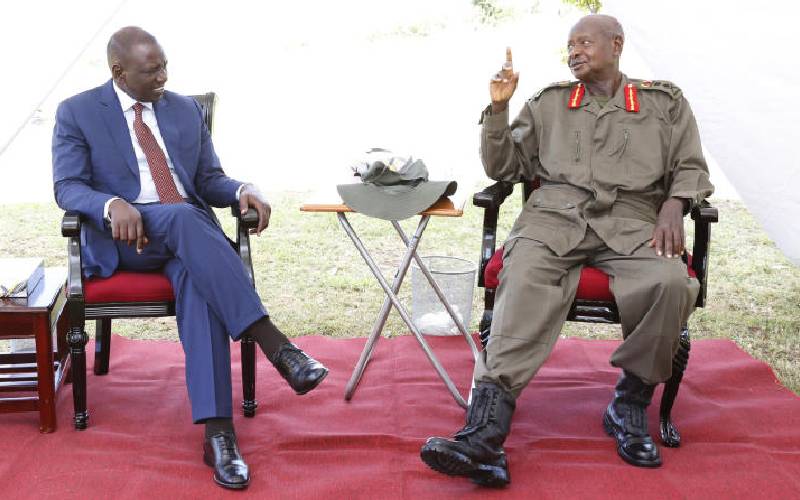×
The Standard e-Paper
Stay Informed, Even Offline

Deputy President William Ruto chats with Ugandan President Yoweri Museveni at Mubenda State Lodge. [DPPS]
With one year to Kenya’s General Election, Uganda’s National Resistance Movement (NRM) has featured prominently. This has raised questions about NRM’s past desire to project regional ‘revolutionary unity’ under President Yoweri Museveni.